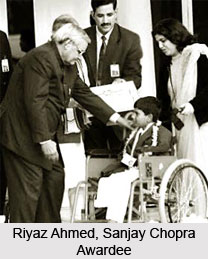 Committee on Public Undertakings was established by the Government of India to expand the parliamentary control over public undertakings. This committee shall consist of fifteen members that would include ten members from Lok sabha and five from Rajya Sabha. The members are elected on the basis of proportional representation by means of single transferable vote. The Committee on Public Undertaking are supposed to perform certain functions that will establish their accountability within the parliament.
Committee on Public Undertakings was established by the Government of India to expand the parliamentary control over public undertakings. This committee shall consist of fifteen members that would include ten members from Lok sabha and five from Rajya Sabha. The members are elected on the basis of proportional representation by means of single transferable vote. The Committee on Public Undertaking are supposed to perform certain functions that will establish their accountability within the parliament.
Functions of Committee on Public Undertakings
Committee on Public Undertakings performs certain functions. The committee shall examine the reports and accounts of enumerated public undertakings; it shall also review the reports of Comptroller and auditor general on public undertakings. In the context of autonomy and efficiency the committee shall further examine whether the affairs of public undertakings are being managed in accordance with sound business principles and prudent commercial practices. With this it shall also check other functions which are vested in Public accounts committee and the Estimates Committee in relation to the public undertakings which has been granted to the committee by the Speaker of the house. Along with this the committee is supposed to submit a fresh report to the parliament regarding the performance of public undertakings and their business efficiency.
Tenure of Committee on Public Undertakings
Committee on Public Undertakings usually provides tenure of five years. One- fifth of its members however retire due to rotation in every year. The members who retire by rotation include those members who have the longest tenure in the office since their last election.
Limitations of Committee on Public Undertakings
Committee on Public Undertakings has certain limitations. The committee cannot discuss matters of government policies as well as matters of day to day administration. Also it has no jurisdiction on the companies in which the government is the largest single share holder. As such the Committee on Public Undertakings has certain limitation which restricts its movement in calculating the actual progress of the public undertakings. Ideally it is not supposed to scrutinize the daily administration of a public undertaking which restricts the committee to reach to the main problem. The rights of the committee is often debated in the parliament which claims that it should also include the powers of Public accounts committee as well.
Committee on Public Undertakings with multi- unit companies
Committee on Public Undertakings did receive a boost by expanding its control on the multi- unit companies. The establishment of giant companies operating in different parts of the country gave rise to a number of problems in the field of management. This rings in the committee of public undertakings who is supposed to look into these problems and solve them for smooth functioning. As such with these giant entrepreneurs the responsibility of the committee also increased which now required greater government involvement. The multi- unit organisations came up with new patterns of administration that included divisional pattern as well as holding company structure with special importance to the board of directors. Overall this gave a new experience to the Committee of public undertakings which had to execute new methods to run a smooth administration.
Thus Committee of Public Undertakings play a very significant role in the Indian administration which functions just like a private sector along with public accountability.






